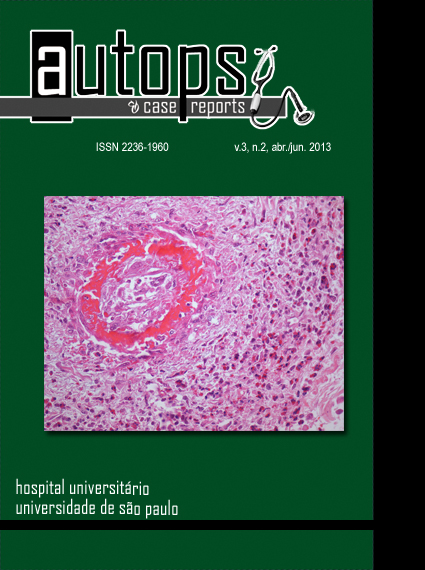Alobar holoprosencephaly and Trisomy 13 (Patau syndrome)
DOI:
https://doi.org/10.4322/acr.%25y.58909Keywords:
Holoprosencephaly, Nervous System Malformations, Patau syndrome, Autopsy.Abstract
Holoprosencephaly (HPE) is a congenital defect of the brain, median structures, and face resulting from an incomplete cleavage of the primitive brain during early embryogenesis. The authors report a case of trisomy 13 syndrome diagnosed at prenatal follow up. The preterm newborn lived only 5 hours, and died because of severe respiratory failure. The autopsy findings disclosed facial, skull, limbs, cardiac, and cerebral malformations. Among the latter, the presence of alobar HPE, the central theme of this report, was evident. The most common nonrandom chromosomal abnormality in patients with HPE is trisomy 13. The most severe variant, namely alobar HPE, is shown in this case report. Discussion on this severe anomaly, along with the case report with details of Patau’s syndrome, is the goal of this report.Downloads
Downloads
Published
2013-06-25
Issue
Section
Article / Autopsy Case Report
License
Copyright
Authors of articles published by Autopsy and Case Report retain the copyright of their work without restrictions, licensing it under the Creative Commons Attribution License - CC-BY, which allows articles to be re-used and re-distributed without restriction, as long as the original work is correctly cited.
How to Cite
Costa, A. D., Schultz, R., & Rosemberg, S. (2013). Alobar holoprosencephaly and Trisomy 13 (Patau syndrome). Autopsy and Case Reports, 3(2), 5-10. https://doi.org/10.4322/acr.%y.58909



